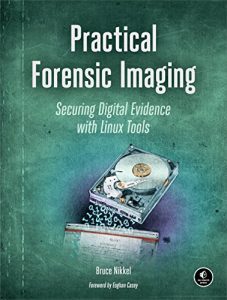Forensic image acquisition is an important part of postmortem incident response and evidence collection. Digital forensic investigators acquire, preserve, and manage digital evidence to support civil and criminal cases; examine organizational policy violations; resolve disputes; and analyze cyber attacks.
Practical Forensic Imaging takes a detailed look at how to secure and manage digital evidence using Linux-based command line tools. This essential guide walks you through the entire forensic acquisition process and covers a wide range of practical scenarios and situations related to the imaging of storage media.
You'll learn how to:
- Perform forensic imaging of magnetic hard disks, SSDs and flash drives, optical discs, magnetic tapes, and legacy technologies
- Protect attached evidence media from accidental modification
- Manage large forensic image files, storage capacity, image format conversion, compression, splitting, duplication, secure transfer and storage, and secure disposal
- Preserve and verify evidence integrity with cryptographic and piecewise hashing, public key signatures, and RFC-3161 timestamping
- Work with newer drive and interface technologies like NVME, SATA Express, 4K-native sector drives, SSHDs, SAS, UASP/USB3x, and Thunderbolt
- Manage drive security such as ATA passwords; encrypted thumb drives; Opal self-encrypting drives; OS-encrypted drives using BitLocker, FileVault, and TrueCrypt; and others
- Acquire usable images from more complex or challenging situations such as RAID systems, virtual machine images, and damaged media












